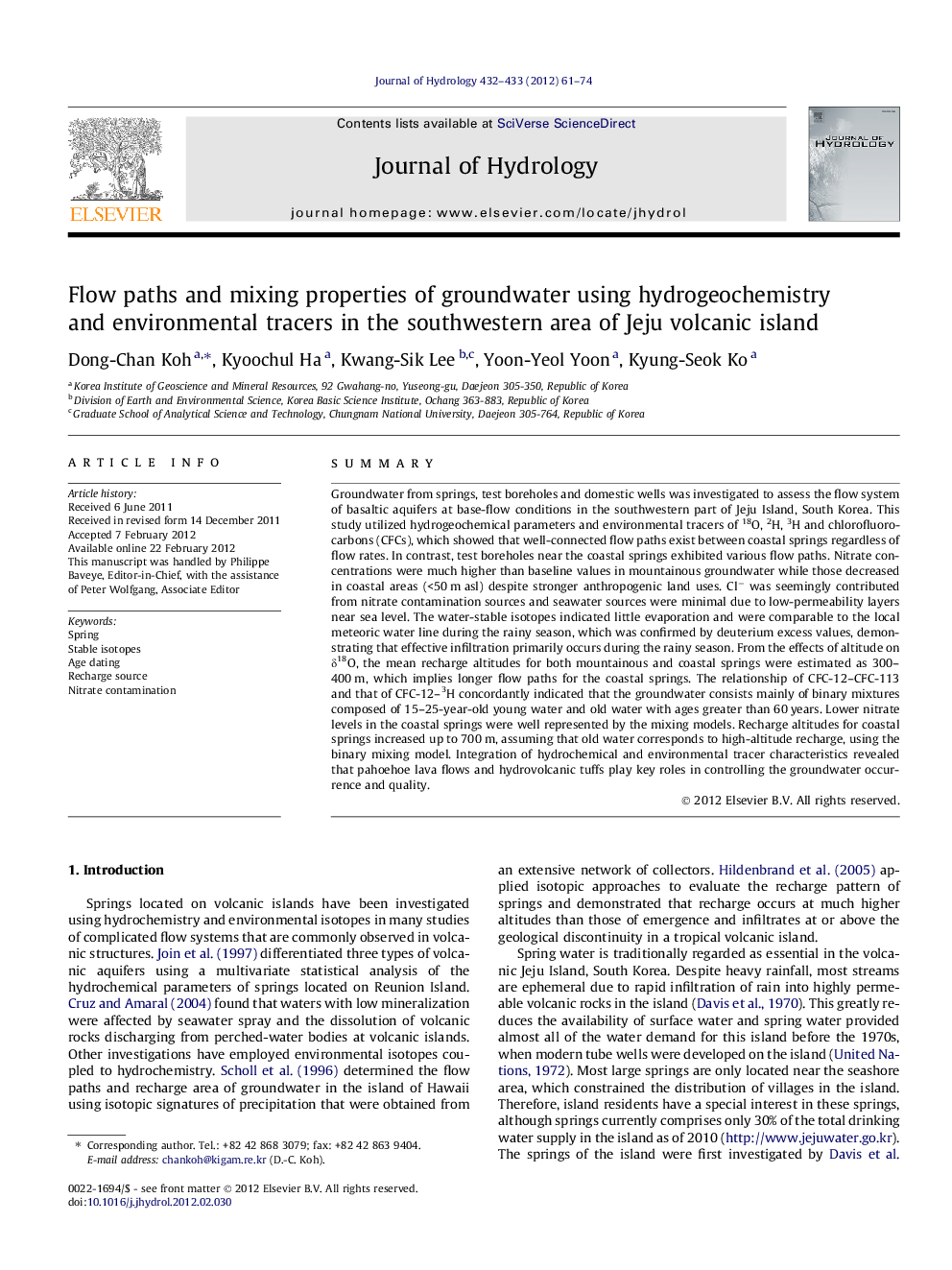| Article ID | Journal | Published Year | Pages | File Type |
|---|---|---|---|---|
| 4577044 | Journal of Hydrology | 2012 | 14 Pages |
SummaryGroundwater from springs, test boreholes and domestic wells was investigated to assess the flow system of basaltic aquifers at base-flow conditions in the southwestern part of Jeju Island, South Korea. This study utilized hydrogeochemical parameters and environmental tracers of 18O, 2H, 3H and chlorofluorocarbons (CFCs), which showed that well-connected flow paths exist between coastal springs regardless of flow rates. In contrast, test boreholes near the coastal springs exhibited various flow paths. Nitrate concentrations were much higher than baseline values in mountainous groundwater while those decreased in coastal areas (<50 m asl) despite stronger anthropogenic land uses. Cl− was seemingly contributed from nitrate contamination sources and seawater sources were minimal due to low-permeability layers near sea level. The water-stable isotopes indicated little evaporation and were comparable to the local meteoric water line during the rainy season, which was confirmed by deuterium excess values, demonstrating that effective infiltration primarily occurs during the rainy season. From the effects of altitude on δ18O, the mean recharge altitudes for both mountainous and coastal springs were estimated as 300–400 m, which implies longer flow paths for the coastal springs. The relationship of CFC-12–CFC-113 and that of CFC-12–3H concordantly indicated that the groundwater consists mainly of binary mixtures composed of 15–25-year-old young water and old water with ages greater than 60 years. Lower nitrate levels in the coastal springs were well represented by the mixing models. Recharge altitudes for coastal springs increased up to 700 m, assuming that old water corresponds to high-altitude recharge, using the binary mixing model. Integration of hydrochemical and environmental tracer characteristics revealed that pahoehoe lava flows and hydrovolcanic tuffs play key roles in controlling the groundwater occurrence and quality.
► We investigate volcanic aquifers using hydrogeochemistry and environmental tracers. ► Groundwater recharge is mainly derived from rainy-season precipitation. ► Coastal springs have significant contribution of high-altitude recharge. ► Groundwater is comprised of binary mixtures. ► Low-permeable layers play a key role on both occurrence and quality of groundwater.
